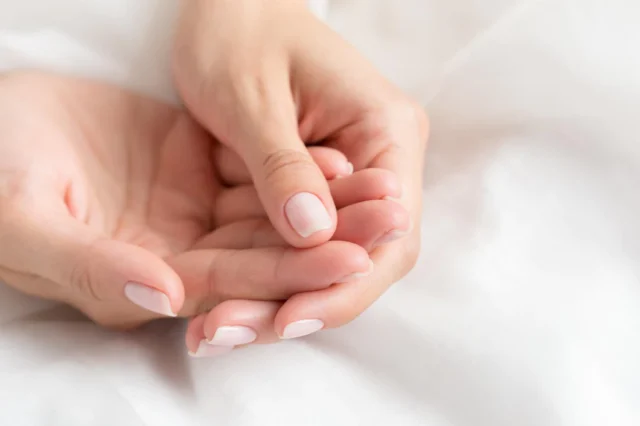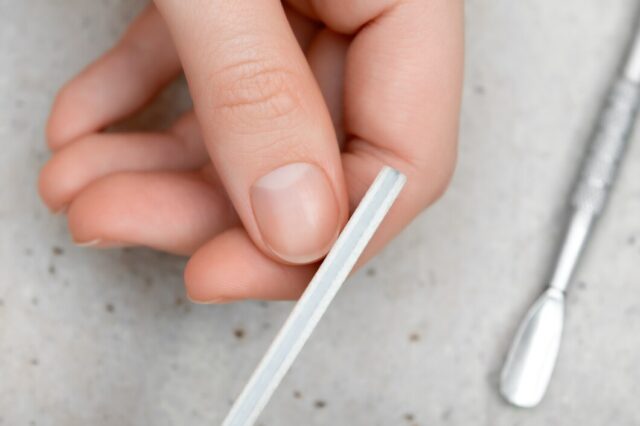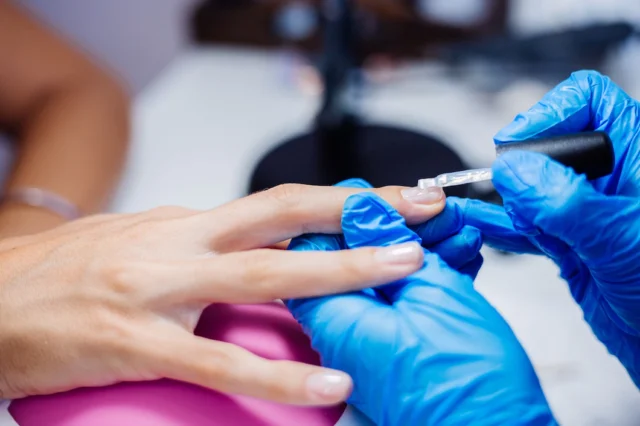
While some people can maintain flawless nails even weeks after a visit to the salon, others cannot seem to keep the paint intact for more than a few days. Forums and webpages on the internet are flooded with agonies of nail enthusiasts grieving over the evanescence of perfect-looking manicured nails.
Often, the culprit is your oily nail beds. Just like your skin, the beds of your fingernails can also have different moisture and oil levels. Oily beds can prevent acrylic paints and even SNS from sticking properly, therefore, the chipping.
Gel-based products can be a savior for people with oily nail beds. So, if you’re looking for a quick solution to this annoyance, take a look at some Gel Polish Starter Kits and get started immediately. Read on to learn everything you need to know about oily nails and how to care for them.
Identifying Signs of Oily Nail Beds

The best way to figure out what nail type one has is to consult a manicurist or a dermatologist. However, several tell-tale signs can also indicate the presence of excess oil in the beds of fingernails. Some of these are:
1. Appearance
The simplest way to tell whether someone’s nails are oily is to judge by appearance. Oily beds would leave your fingernails looking shiny, gleaming, and smooth. They often look brighter and glossier than others, garnering quite a bit of envy when left unpolished.
While excess oil in the plate keeps your claws naturally healthier, getting a manicure or polishing them becomes agonizing.
2. Hard to maintain
People with excess oil in their talons find themselves frequently complaining about how quickly manicures last. Many manicurists believe that the drier the nail, the longer products last on it. That is because natural oils under the plates make it difficult for any product to stick on the surface. Ordinary base gels and acrylic polishes seldom last for more than a couple of days before flaking off, and any expense on varnish or manicures starts seeming pointless.
3. Oily Skin
Many dermatologists believe that the type of nail someone has depends on their skin.
That is because if sebaceous glands produce excess natural oils, they are stored in the skin and the nail beds. So if someone has oily type of skin, it is likely that their claws are also oily.
What Causes Oily Nail Beds?

Sebaceous glands in the skin produce oil for the skin surface, which gets stored in the skin and sometimes in the beds of nails. That causes the beds to become oily and glossy.
While this makes it difficult for any product to last without chipping or lifting, it keeps the nails naturally moisturized, healthy, and strong.
Sometimes, a disrupted pH balance can also cause oily nail beds. If one has a high pH, excessive oil is produced within the nail beds. In this case, the solution comes easily. Just like we maintain the pH balance of our skin to prevent rosacea and acne, there are many products available to balance the pH level of the nail beds.
How To Deal With Oily Nail Beds

Oily nail beds cannot be permanently cured. However, this does not have to be particularly disheartening as one can enjoy long-lasting manicures even with oily fingernails. A few simple tricks are all you need to flaunt gorgeous manicured nails even while your nail bed floods with natural oils. Some of these are:
1. Maintain a Healthy Diet
Like most issues with skin and hair, a well-balanced and healthy diet can solve many nail problems. A healthy diet will give added strength to nails, even if they are not oily.
Supplements like biotin and zinc tablets also maintain the health of the plates, beds, and cuticles of nails.
2. Use Gel-Based Nail Polishes
Compared to acrylics and powder varnishes, gel-based products work much better on oily nails. These products stick to the surface of the plate and do not chip easily. Even with oily nail beds, the base coat of gel polishes can give you weeks of perfect-looking nails without concerns for chipping and lifting.
3. Oil Removal Before a Manicure
An easy and quick trick to help your manicures last longer is removing the oil from the surface right before you start the procedure. Most manicure kits come with a dehydrator or cleanser, but they are often insufficient for oily beds. Washing hands and cleansing with hand soap, scrub, or an oil-fighting soap can remove the excess oil, adding weeks to the lifespan of your manicures.
4. Use a Bonder
A bonder is a thin liquid that creates a sticky layer on the surface of the nail plate, making it easier for the product to stick. When applied before the base gel, it helps the varnish stick efficiently.
5. Use the Right Items
Several products are available in the market to help care for oily nails. PH balancers and dehydrators now come included in nail care and manicure kits. Regular use of ridge filler and strengtheners can also help your cause.
Conclusion
One should, however, use products like dehydrators and scrubs with caution. Often, technicians believe that the drier the nail, the better any product sticks to it. As a result, people often overuse these products hoping for the manicure to stay intact for longer.
That only harms the quality and texture of the nails.
If the plate is dried off, the bed produces more oils to create a balance, further complicating the issue. Overdrying can also make nails brittle and more prone to flaking and splitting. The best solution, therefore, is to use products that do not tamper with their natural texture but help your manicures last longer.









